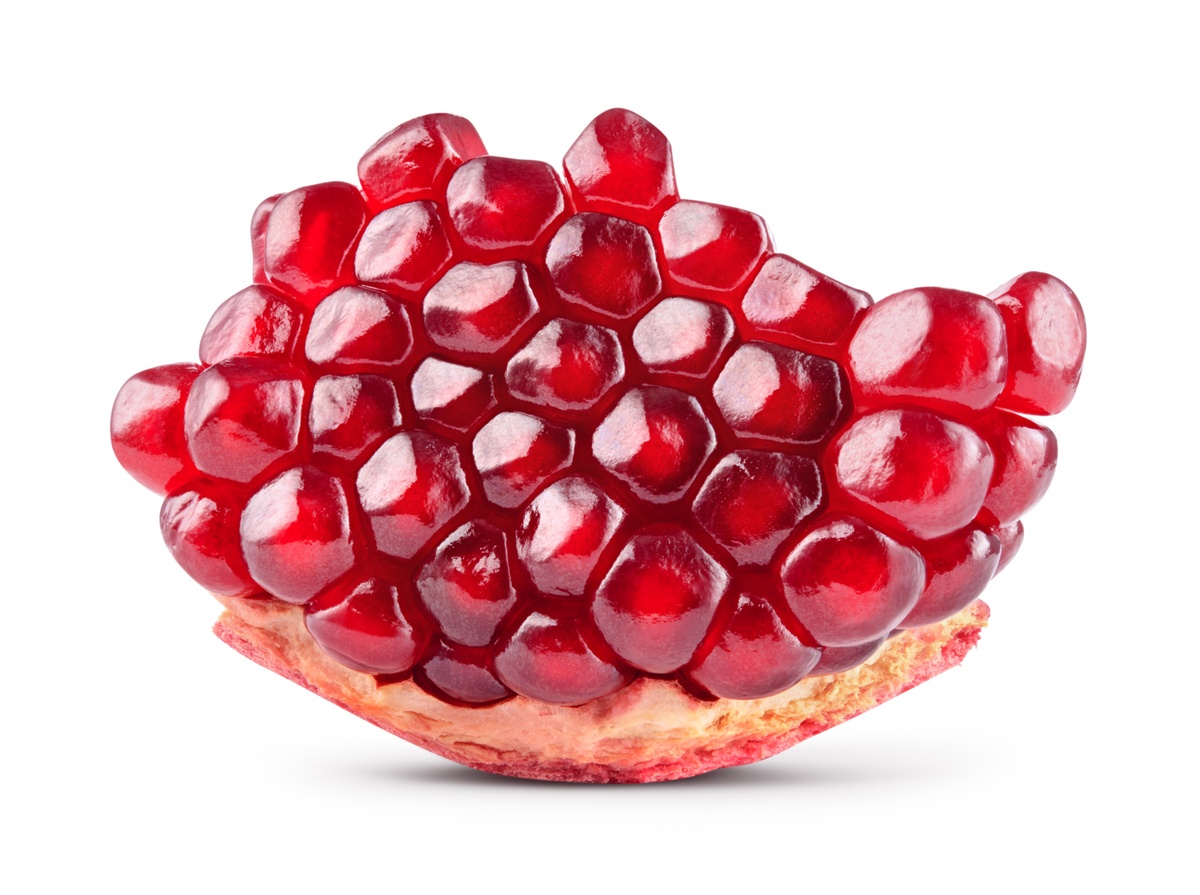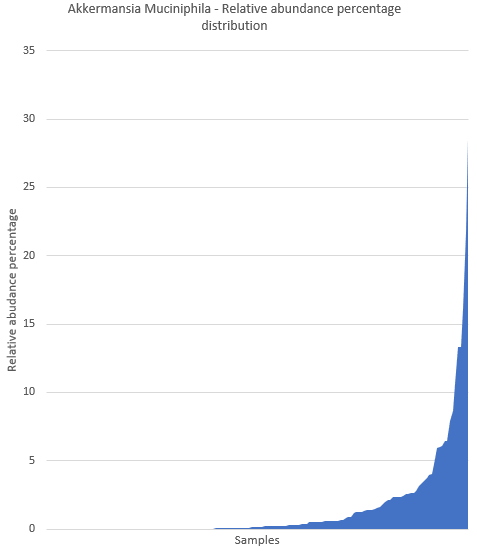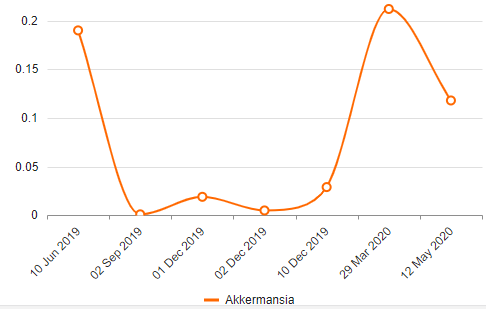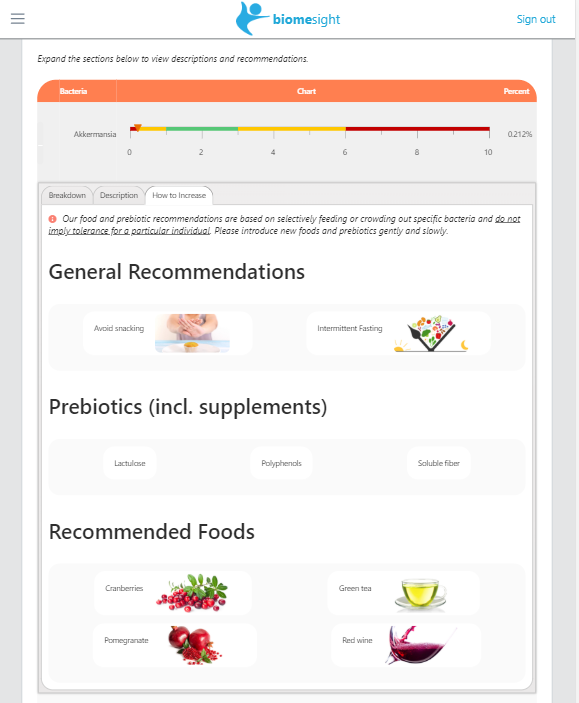
Akkermansia Muciniphila - The most prevalent probiotic deficiency in healthy adults
One of the most surprising findings since starting Biomesight and reviewing numerous microbiome result sets is just how common having only small amounts of Akkermansia Muciniphila is. The optimal range is currently defined within Biomesight as being between 1% and 3%. Our ranges are derived from the teachings and research of Dr Jason Hawrelak of the Probiotic Advisor. A range of 1 - 4 % is also commonly used.
It does beg the question - if low abundances are so prevalent, is having it in sufficient quantities really so essential? What are the associated benefits or functions that we expect it to perform within the gut that cannot be handled by other bacteria?
And exactly how common is out of range Akkermansia? At the time of writing this article, here's the current Biomesight stats:
Average relative abundance: 1.5%
Median: 0.13%
Max: 28.6%
Percentage of samples in which:
- present: 82%
- absent: 18%
Yes, that median value is correct! In layman's terms - the middle value for Akkermansia relative abundance is only around 1/8th of a percentage point! Granted, we need to consider that the Biomesight sample set is still relatively small and is potentially skewed as those with imbalances are more likely to get their microbiomes sequenced. We have not taken the approach to add a representative sample set from American Gut like many other similar companies do to define their optimal or "normal" ranges. It is still too early for us to adapt our ranges as additional metadata relating to the samples is needed before we can draw any firm conclusions.
Nevertheless, it is an interesting pattern. This is not observed in other prominent probiotics like Bifidobacterium and Lactobacillus where median and averages both resemble the optimal ranges.
Here's the relative abundance percentage distribution for samples in Biomesight:
What are the benefits we expect from Akkermansia?
Akkermansia feeds on mucin, hence it's name, and is known for being of particular importance to the integrity of the gut's epithelial layer. We know that butyrate is also essential for the gut lining, yet Akkermansia is not a butyrate producer - Faecalibacterium, Blautia, Roseburia and Ruminococcus are the most important butyrate producers. As a prominent mucin degrader it has been seen to have a prohibitive affect on pathogenic organisms also capable of feeding on mucin. It's also been proposed that Akkermansia promotes mucin secretion, thereby having a protective affect on the gut lining. This is potentially through it's production of acetate which feeds the goblet cells of the gut lining. But again many other bacteria produce acetate, including Bacteroides which is normally well represented. With regards to SCFA production in particular - within Biomesight we classify Akkermansia as a propionate producer but as mentioned earlier, several studies also suggest it's involvement in acetate production.
Any findings specific to Akkermansia?
Studies analyzing the bacterial cell proteins of Akkermansia identified Amuc-1100, an outer membrane protein of Akkermansia. It is found to activate intracellular signals mediated by the Toll-like receptor 2 (TLR2) of intestinal epithelial cells, contributing to the enhancement of the intestinal barrier. It has also been demonstrated that Amuc-1100 is involved in the immune response, specifically in the induction of the production of interleukin-10 (IL-10), which is an anti-inflammatory cytokine.
Other than gut barrier integrity, Akkermansia has also been associated with:
- Leanness (therefore good for weight loss)
- Reducing susceptibility to Type 2 diabetes and other metabolic disorders. Several reports indicate that Akkermansia muciniphila affects glucose and lipid metabolism
- Improved sleep
- Modulate immune response
Another finding worth mentioning - the concentration of lipopolysaccharide (LPS) in the blood is a measure seen to be indicative of intestinal permeability (aka leaky gut). This marker is commonly higher in obese populations and Akkermansia administration was shown to decrease it. Akkermansia itself is a gram negative bacteria, with LPS in it's cell membrane but it's not associated with endotoxemia commonly seen in other gram negative bacteria.
The good news if you are deficient and feel you would benefit from having higher Akkermansia is that it is now finally available as a probiotic, Unfortunately though, the price level is currently prohibitive for many (~$200 a month).
Raising my Akkermansia levels
I am one of the many with lower than optimal numbers of Akkermansia. When I started my gut health journey in April last year, it was not detected. Akkermansia is my only probiotic that's never been in range.
Here's what it has looked like since:
I will admit my dedication to feeding Akkermansia is not what it should be. I sometimes religiously eat fresh pomegranate for days on end but then get busy and before I know it I have skipped it for a week. My plan though is to at least feed it optimally in the week leading up to my next test. I also plan to take my next sample from the side of the stool as logically this part should be closer to the lining with a higher proportion of Akkermansia. I guess I am not looking to see whether my efforts to feed it has paid off but rather to answer the more basic question of whether I need to increase it in the first place.
What benefits am I expecting from getting my Akkermansia in range?
I am currently in very good health - if I could improve anything it would be my sleep though. It is mostly sufficient - I wake up rested on most days and average around 7 hours (~2 hours REM, 1h10 deep on a good day) but during my luteal phase I do have some challenging days after waking up earlier than I would have liked. No doubt that hormonal changes during this time is behind the sleep disruption but I'd like to see if raising my Akkermansia has any added benefit during this time.
Tips for increasing
Biomesight users would be familiar with this in app view. Intermittent fasting and fasting in general increases Akkermansia. Prebiotics include lactulose, polyphenols and soluble fiber. Some sources also cite inulin being effective.
The recommended foods are based on their high polyphenol content of which cranberries, pomegranate, green tea and even red wine are known to have relatively high quantities. Red grapes are also cited as a good source.
External Sources
Akkermansia muciniphila is a promising probiotic
A next-generation beneficial microbe: Akkermansia muciniphila
Categories: Prebiotics Probiotics Tags: akkermansia probiotics sleep weight-loss



